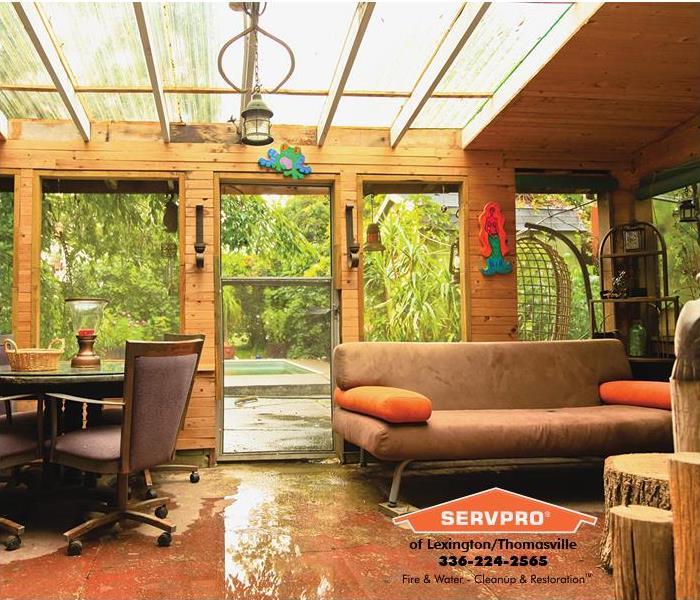How to address mold after a flood
11/30/2020 (Permalink)
Floods can quickly turn lives upside down. And with our above average rainfall in the Triad, many homeowners have experienced flooding for the first time. And many home and business owners may have discovered the water damage they thought they cleaned up wasn't completely dry. The damage caused by flooding can linger long after water levels have subsided. Mold left in the wake of a flood poses a significant threat, and WebMD notes that mold can be especially dangerous for people with respiratory issues like allergies or asthma. In fact, the Centers for Disease Control and Prevention notes that, in the wake of Hurricane Katrina, one of the organization’s chief concerns was to let those affected by the storm learn how to safely clean up mold.
Mold cleanup must be done with a sense of urgency, as WebMD indicates that mold can grow very quickly in damp environments. Mold can begin to form in as little at 24-26 hours in the right conditions. Once it colonizes in your home it can easily spread throughout your property if not properly mitigated. Here are some things to consider if your property has been affected by mold. Once it’s safe to reenter a home, the CDC recommends the following approach to address mold after a flood.
- Wear personal protective equipment. Gloves, masks and goggles should be worn to protect the eyes, nose, mouth, and skin. While personal protective equipment can be highly effective, anyone with mold allergies or preexisting respiratory conditions like asthma should leave mold cleanup to the professionals. At SERVPRO of Lexington/Thomasville we offer a no cost assessment so you can understand the scope of the loss and whether it can be handled by the you the property owner or if it’s outside your scope of ability.
- Discard certain items. Items that are wet with flood water but cannot be cleaned and completely dried within 24 to 48 hours should be discarded. People with flood insurance policies may need to take photos of items prior to discarding them if they hope to be reimbursed. At SERVPRO we can assist with this process. We can provide a completely inventory including photos for your insurance company.
- Open doors and windows. The Federal Emergency Management Agency notes that airing the home out by opening the doors and windows can inhibit mold growth when humidity levels are lower outside than inside.
- Circulate air around the house. If it’s safe to turn the electricity back on, circulate air inside the home with fans. In addition, use a dehumidifier to remove moisture from inside the home. At SERVPRO we have the latest equipment and understand the science that goes into properly drying your home.
- Drying the home as quickly as possible, and ideally within 24 to 48 hours of the occurrence of flooding, can inhibit further mold growth. However, it’s imperative that residents only reenter a home after getting the go-ahead from local authorities.
A safe and quick response to flood-related mold growth can prevent illness and further damage to a home. So, if your home or business has experienced flooding and now have an issue with mold, give us a call at (336) 224-2565 and we can make it “Like it never even happened.”






 24/7 Emergency Service
24/7 Emergency Service
